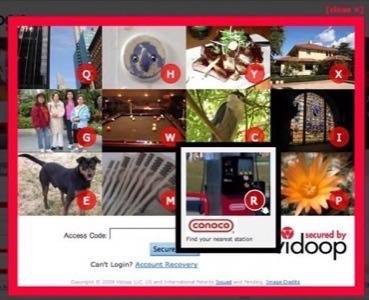There’s big news in the OpenID world; new solutions are hitting the market that aim to solve probably the biggest problem the paradigm faces – usability.
JanRain, owners of MyOpenID.com, and ConfidentTechnologies are both making announcements that could help make OpenID much friendlier. Confident is the half of Vidoop that serves enterprise and financial institutions.
Here’s a look at the two solutions being offered. What do you think? Will these help users get over the hump and easily understand how to use OpenID?
IDSelector
JanRain’s new service IDSelector is a login framework that plugs into sites that already have OpenID enabled on the back-end. Just a few lines of code put a friendly interface on top of existing OpenID login.
Here’s a sample below:
The idea is that users will click on the login box, be prompted to associate themselves with a certain OpenID provider and then the URL will be auto-populated so that only a username will be needed. Subsequent visits to sites using IDSelector will result in users being shown the same provider that they logged in with last time.
Website owners can determine which providers are on the drop down list for their site and which order they will appear in. The company says that if IDSelector.com goes down for any reason, the javascript simply won’t register and a site’s own login field will remain.
Caveats
While this is a huge improvement over the most common practices for prompting OpenID login, there are still a few problems. First, though this is “provider neutral” – it’s not a decentralized service and that’s one of the best things about OpenID.
Second, it doesn’t work perfectly for every provider because there is still a huge maze of different implementations on the market. Yahoo! for example, doesn’t want a username here in a URL – you’re just supposed to click Yahoo! and then login. That takes you over to Yahoo! to provide your username there.
Some authenticating parties support OpenID 2.0 and some don’t. Presumably that will change someday soon.
Finally, this is still URL centric. It’s easier than just prompting people for a URL. Though some people contend that this is an easy way to tech people about signing in with a URL, others will no doubt argue that the term OpenID and URLs shouldn’t be shown to users at all if this is going to go mainstream.
Confident Technology’s RecoginitionAUTH to Power Many More Services
If you’ve seen consumer web OpenID provider MyVidoop’s implementation of OpenID login then you’ve got a pretty good idea of how Confident’s RecognitionAUTH works. The technology asks users to identify images that are of a type they associated their account with, instead of using a password.
Today Confident is announcing that a host of other OpenID providers are going to start using the RecognitionAUTH system to allow their users to login as well. ClaimID, Clickpass and ooTao (iNames) will all use enable their users to login using the Image Shield technology behind RecognitionAUTH.
The idea here is that users will never have to read the word OpenID, look at any URLs or otherwise get confused. The service is already in use by a number of financial institutions.

We hear that AOL is also in advanced testing with Image Shield, so the solution could spread much further even faster than it already is in the financial services sector.
Vidoop/Confident is quickly gaining momentum, branching out from their home base in Tulsa, Oklahoma to open a Portland, Oregon office. The entirely revenue-funded company hired OpenID Foundation Chair Scott Kveton and is now quietly hiring up many of the smartest geeks in town, challenging JiveSoftware for talent. Already the home of the inventor of the wiki (Ward Cunningham), the initiator of the Linux kernel (Linus Torvalds), a boatload of RSS and OpenSource-heads, Portland Oregon is also becoming a hotbed of OpenID work. In addition to Confident’s office, JanRain is based in Portland as well.
Will Either of These Catch On?
There are a lot of big questions all around OpenID. It’s a new paradigm with solid potential and exciting possibilities. In order to actualize all that potential, though – the front door to using OpenID needs to be more accessible. There’s a wide range of providers, features and approaches. To learn more check out SpreadOpenID.org.
Both of these seem like great first steps. Which do you prefer? What would you like to see happen to make OpenID more usable for non-technical folks – or for yourself?










